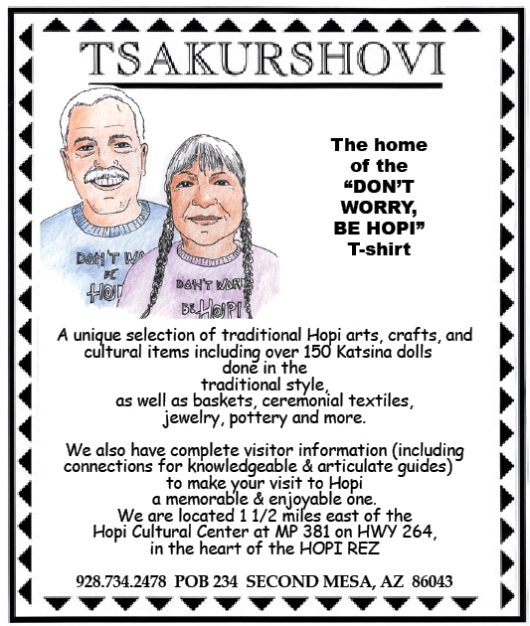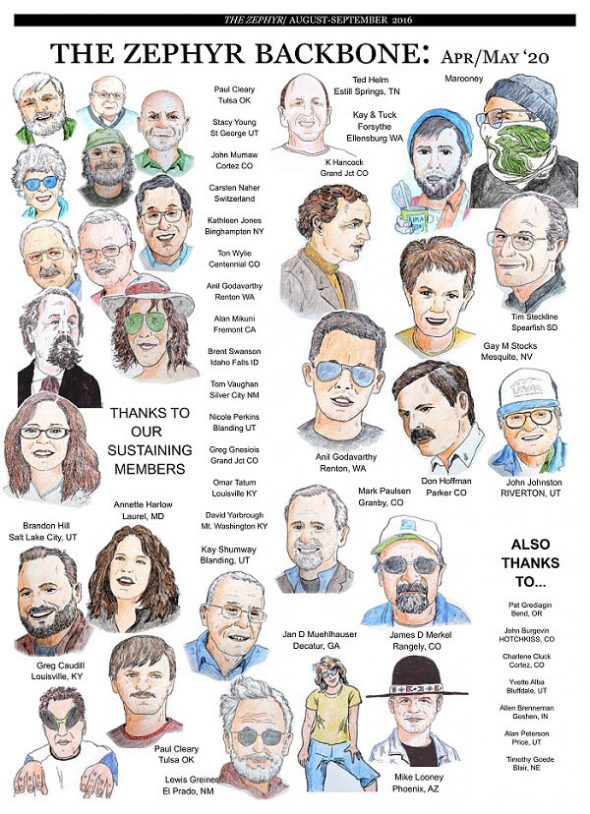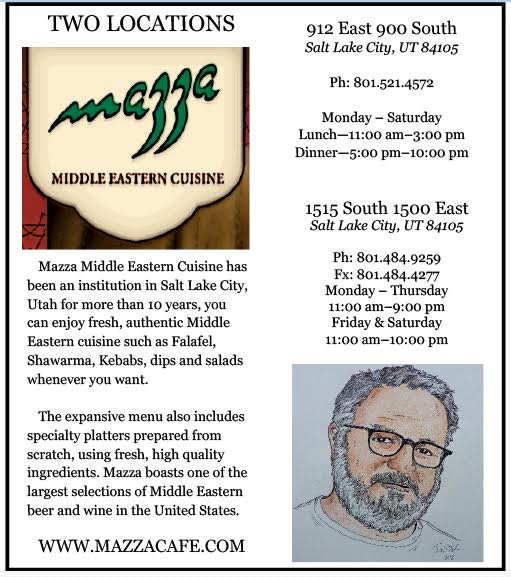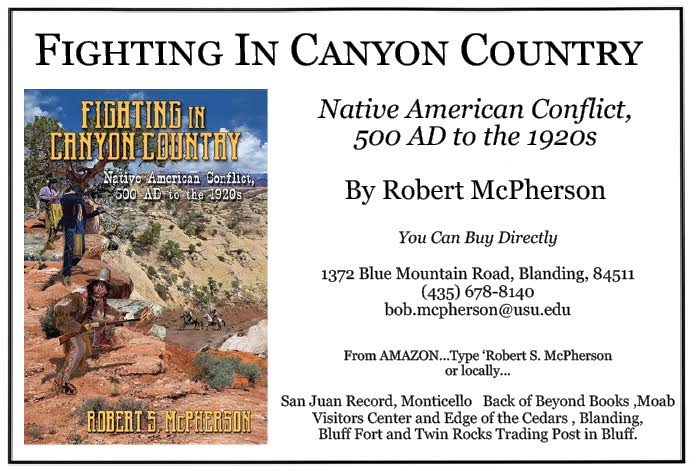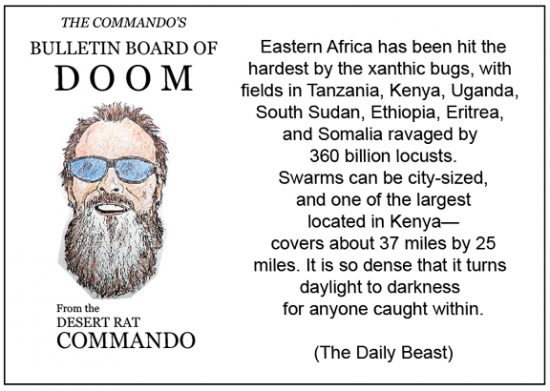As Bill Davis and I chatted about his new column, one name dominated our thoughts more than any other. Sam Taylor, the longtime publisher of the Moab Times-Independent, hired Bill in 1978. Though their politics could not have been more incompatible, Sam was as generous with his new protege as Bill could ever have hoped for.
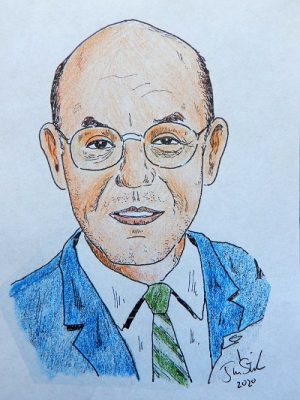
Even before Bill arrived in Moab, I had discovered the depth of Sam’s sense of fairness and his talent for bridging differences. Sam was a patient man, even at times to people who didn’t fully deserve it. Like me.
Here I need to offer my own memory.
When I came to Moab as an obnoxious, opinionated, skinny, 24 year old seasonal park ranger, Sam had already run the Times for 20 years. Before Sam, of course, his father Bish had published the T-I for decades. In fact, the Taylor Family had been an integral part of Moab for a century. Then I arrived and decided I should tell him and his readers why my newfound perspectives mattered more.
It was a bad start.
The debate over public lands was just as fierce in the late 1970s as it is now, perhaps even more so. I’d been a resident of Moab for all of a year or less when I decided to fire off my first “Dear Sam” letter to the T-I. I can only recall bits and pieces of my premier rant, but it had something to do with wilderness, and why we needed lots of it, and who wanted it, and who opposed it. There was some reference in my letter about the “silent majority” and I still recall ending my first literary endeavor with the admonition, “sighs and whispers don’t count.” I don’t even know what that was supposed to mean.
In any event, Sam devoted much of his adjacent “Community Comments” column to taking me to the wood shed and giving me a well-deserved pummeling. Sam noted that “this young ranger from Arches,” had only lived in Moab for a short time; yet I now seemed fully prepared to give the residents of southeast Utah the advice and counsel that–I thought–they so sorely needed.
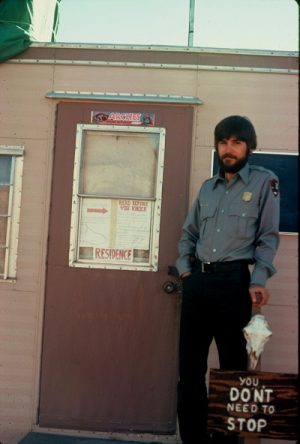
Sam asked rhetorically just how I expected Grand County’s residents to survive economically, if I had my way and transformed canyon country into one big wilderness area. Sam supported a diverse economy, he explained. He supported tourism, but he had made a career out of seeking balance for Southeast Utah. He wrote about the years-long process and the thousands of hours that had been invested in seeking solutions. Should all of them just yield to me?
Then, as now, the subject of multiple use on public lands was far more complicated than anyone, Left or Right, wanted to acknowledge. When I think back on it, Sam probably handled it better than most.
It’s a blessing that I haven’t been able to find the precise text in the Marriott Library archives. I don’t know if I could bear to re-read my own words. And I only remember the “young ranger at Arches” part because I was sure I was about to be fired. I went to see my boss, Arches manager Larry Reed who practically cringed when I entered his office. Larry shook his head and said, “Well…you really screwed up, Stiles.” He advised me to go see the Canyonlands Group Superintendent, Pete Parry. “I think he wants to talk to you.”
I’d never met Pete. He was new to his job too, but was already known for his taciturn nature. I thought it might be possible he’d fire me just by glaring at me. I made an appointment and sat nervously in the outer office while his secretary Marge, eyed me suspiciously.
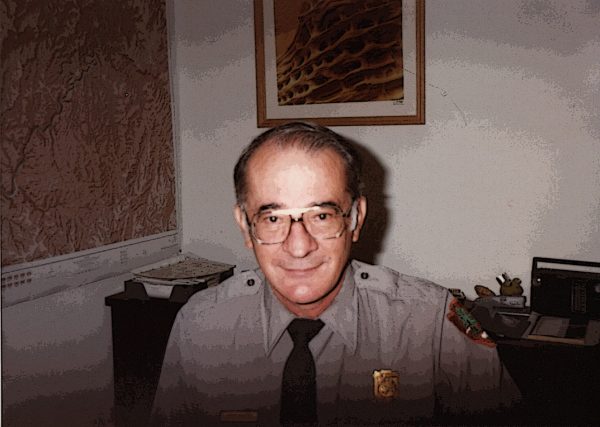
Finally Pete came to the door. “Come on in, Ranger Stiles.” The super told me to have a seat. Pete often lapsed into long, uncomfortable silences; strange interludes is the way the Marx brothers might have described them. Pete fiddled with something on his desk. Finally he looked up and locked his inscrutable stare on me.
“You’re sort of…I don’t know…impulsive, aren’t you?” Pete asked.
I nodded. “Sort of.”
Pete stared at his fingernails for another long ten seconds, and then he said, “I’m going to give you two pieces of advice. You can take them or leave them, but I’ll at least put it out there for you.”
I nodded again.
“First,” he continued, “whenever you get the urge to scribble another letter like that, go ahead and write it. Vent to your heart’s content. But then, take that piece of paper and put it in a drawer for 48 hours. Don’t look at it. Don’t even think about it. Leave it there. If after two days you still want to mail it, well at least you’ve thought it through.”
His words sounded wise beyond my years, which wasn’t that difficult a task at the moment. I was sure my maturity and intellect might score at an eighth grade level, but I took his advice to heart. Then I asked, “What’s the second piece of advice?”
Pete said, “Go talk to Sam Taylor.”

Gulp. I drove down to Center Street, parked and went in. Sam was standing at the counter, scribbling in a note pad. He looked up, peering over his glasses and smiled. “Hi. Can I help you?”
“Well,” I said, “Pete Parry sent me…I’m, uh…Jim Stiles.”
I wondered if Pete might have tipped Sam off, but he gave no sign of it. Sam laid down his writing pad, picked up his pipe, placed it in the corner of his mouth and said, “Let’s go into my office.” He led. I followed. Sam took a seat behind his desk, his pipe still firmly clenched. He leaned back and placed his hands behind his neck.
Now what? I wondered. I’d expected a stern lecture but instead, he asked, “Where’re you from? And how in the heck did you end up in Moab, Utah?”
From the get-go, the “chewing out” I’d feared never happened. Instead, we had a constructive conversation and, in spite of my own preconceptions, I liked him instantly. He spoke, I listened. Then I spoke, he listened. For those fortunate to have known Sam, you also know he had one of the most mellifluous, soothing, baritone voices on the planet. Even if he’d been harsh, I might not have noticed.
But we soon decided neither of us was as bad as the other had assumed, and for me, it was the first of many long chats over the years. I also learned, just from that conversation, that I didn’t know as much about the complex problems of southeast Utah as I thought, nor did I have any real solutions, though it took me many years to come to grips with it.
In the next three decades, I cannot recall a time when Sam wasn’t amenable to a chat. And as years passed, we seemed to agree on issues more often than not. In the early 2000s, as my concerns about the impacts of Industrial Tourism grew, I took a lot of heat from my environmentalist pals who were so busy creating alliances with venture capitalist billionaires and the recreation industry that they failed to notice the long term impacts they were helping to create.
In a 2006 cover story about The Zephyr for ‘High Country News,’ author John Fayhee found plenty of critics who thought I was “out of touch” at best. But I could not have been more gratified or honored than to have Sam Taylor come to my defense. For the article, Sam called The Zephyr:

“…a fine publication, though Jim and I did not always agree on the issues…I think Jim lived up to the promise he made at the outset to be fair and thorough. (The paper) has been a big part of our community.”
And then, responding to some pretty harsh personal criticism from Utah’s most vocal environmental group, Sam noted:
“For SUWA to be saying now that he is unfair and that he doesn’t get his facts straight is itself unfair and almost desperate. They’re just not used to being questioned the way Jim is questioning them…”
Sam added, “Jim is finally asking the right questions,” which I might have phrased differently. I think finally I was asking ALL the questions. Not just one side of the argument. But Sam’s observation was a fair point, just the same.
Later, I stopped by the office to see Sam a couple times, but never found him there. His health had started to decline and he wasn’t coming to the office as often. I’ll always regret that I didn’t get to thank him personally before Sam passed away. Today the Taylor Family still runs the Times, hasn’t caved to the corporate media world, and has run the paper continuously for almost a century and a quarter. An astonishing accomplishment.
In fact, in 2020, every time I read a news article by their young reporter, Carter Pape, I think of Bill Davis and the excellent reporting he did at the T-I. It’s good to see that kind of honest journalism live on. I’m sure Sam would be pleased. And I know Bill is.
Jim Stiles is Founding Publisher and Senior Editor of The Canyon Country Zephyr.
To comment, scroll to the bottom of the page.
Zephyr Policy: REAL NAMES ONLY on Comments!
Don’t forget the Zephyr ads! All links are hot!
